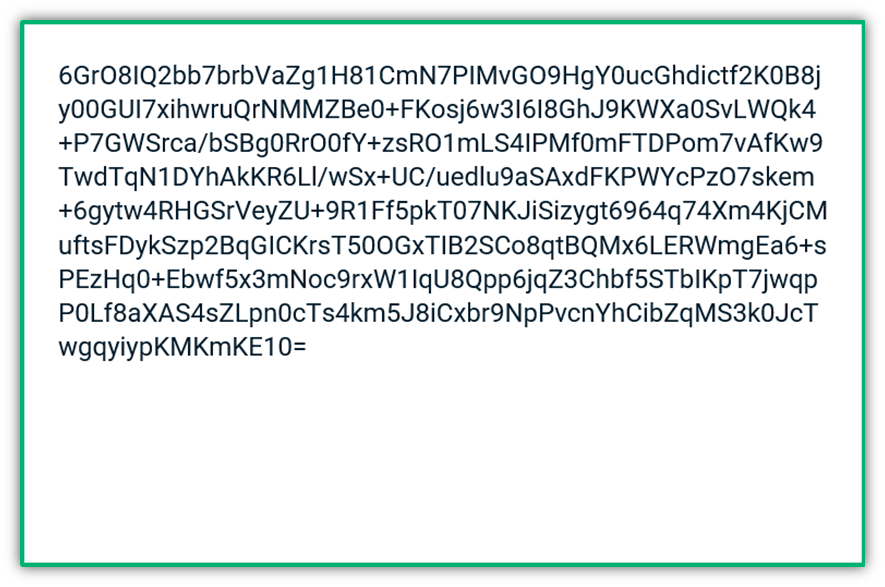Cryptography, at its core, is an intricate dance of mathematical principles and logical reasoning. When delving into the realm of encrypted messages, understanding how to calculate various components becomes paramount. This analysis not only elucidates the efficacy of encryption algorithms but also provides insight into their potential vulnerabilities. In this exploration, we shall dissect the mathematical machinations behind encryption, elucidating methods to compute key specifications, assess encryption strength, and even decode messages under certain conditions.
At the outset, it is essential to differentiate between different encryption methodologies. The two predominant classes of encryption are symmetric and asymmetric cryptography. Symmetric cryptography utilizes a singular key for both encryption and decryption, whereas asymmetric cryptography employs a pair of keys: a public key to encrypt the message and a private key to decrypt it. This bifurcation lays the groundwork for our mathematical analysis.
One of the fundamental concepts in symmetric encryption is the key length, which is directly proportional to the security of the encryption algorithm. In symmetric keys, the potential number of combinations can be computed using the formula (2^n), where (n) represents the number of bits in the key. For instance, a 128-bit key would yield (2^{128}) possible combinations, a number so astronomical that it renders brute force attacks impractical with current technological capabilities. This illustrates why the choice of key length is paramount when establishing security protocols.
As we transition to asymmetric encryption, we encounter additional layers of complexity. Asymmetric keys rely on mathematical functions such as RSA (Rivest-Shamir-Adleman) which utilizes the difficulty of factoring the product of two large prime numbers. The security of RSA is contingent upon the size of these primes and can be expressed through the complexity of the integer factorization problem. To calculate the key size in RSA, one commonly uses the formula, which involves determining the modulus (n = p times q) (where (p) and (q) are prime numbers), leading to the public (e) and private (d) exponents, both of which must fulfill specific mathematical criteria. Herein lies another mathematical conundrum, as selecting sufficiently large prime numbers is crucial to maintaining an impenetrable level of security.
Moreover, one must also consider the operational efficiency of these encryption algorithms. The concept of “asymptotic analysis” allows cryptographers to compute the time complexity of various algorithms, often denoted as Big O notation. For example, the encryption time for the AES (Advanced Encryption Standard) algorithm could be encapsulated by the notation (O(n^k)), where (n) is the size of the input and (k) denotes the algorithm’s degree of polynomial complexity. This analytical lens permits us to assess the viability of algorithms under varying circumstances, ensuring that encryption remains both robust and efficient.
Furthermore, the calculation of encrypted message lengths cannot be overlooked. The resultant ciphertext will typically vary in size from the plaintext, often expanding due to the nature of the encryption process. For instance, when utilizing block ciphers, messages must align with the predefined block size, subsequently padding any excess plaintext. These padding schemes, while pivotal for functionality, can also introduce vulnerabilities, such as padding oracle attacks, warranting diligent scrutiny during implementation.
Next, an imperative aspect of encryption pertains to entropy, the measure of unpredictability or randomness. For any cryptographic system, the effectiveness of the encryption hinges on its entropy. The Shannon entropy formula presents an analytical pathway for computing this: (H(X) = -sum p(x) log_b p(x)), where (H(X)) represents the entropy of the random variable (X) and (p(x)) the probability of the variable’s occurrence. A higher entropy level correlates positively with superior security, as deciphering a cipher with elevated entropy necessitates exponentially more computational resources.
Transitioning towards practical implications, it necessitates attention to real-world scenarios where encrypted messages are calculated and evaluated. Tools such as entropy calculators serve to analyze the strength of passwords and encryption keys, offering a quantitative metric that quantifies the effectiveness of password policies and encryption techniques. This not only aids in the selection of robust keys but also provides actionable insights into policy-making for information security.
Lastly, while it may seem esoteric, the analysis of encrypted messages extends beyond merely calculating their dimensions or security levels. It involves a deeper understanding of the implications of these calculations. Each piece of mathematical data serves as a testament to the continual cat-and-mouse game between cryptographers and potential adversaries. With every advancement in computing power, a corresponding evolution in encryption methodologies emerges, necessitating ongoing academic vigilance and technological innovation to safeguard sensitive information.
In summation, the journey into calculating encrypted messages unveils a plethora of mathematical frameworks and analytical considerations. As cryptographers traverse this complex landscape, understanding the underlying mathematics becomes crucial in both forging new encryption methods and evaluating existing systems. The convergence of theory, practice, and rigorous mathematical analysis forms the bedrock upon which secure communications are built, ensuring that the sanctity of protected information is maintained in an increasingly digital world.








Leave a Comment